Stick this chart on the fridge as a friendly reminder as to when and how to introduce solids to junior.
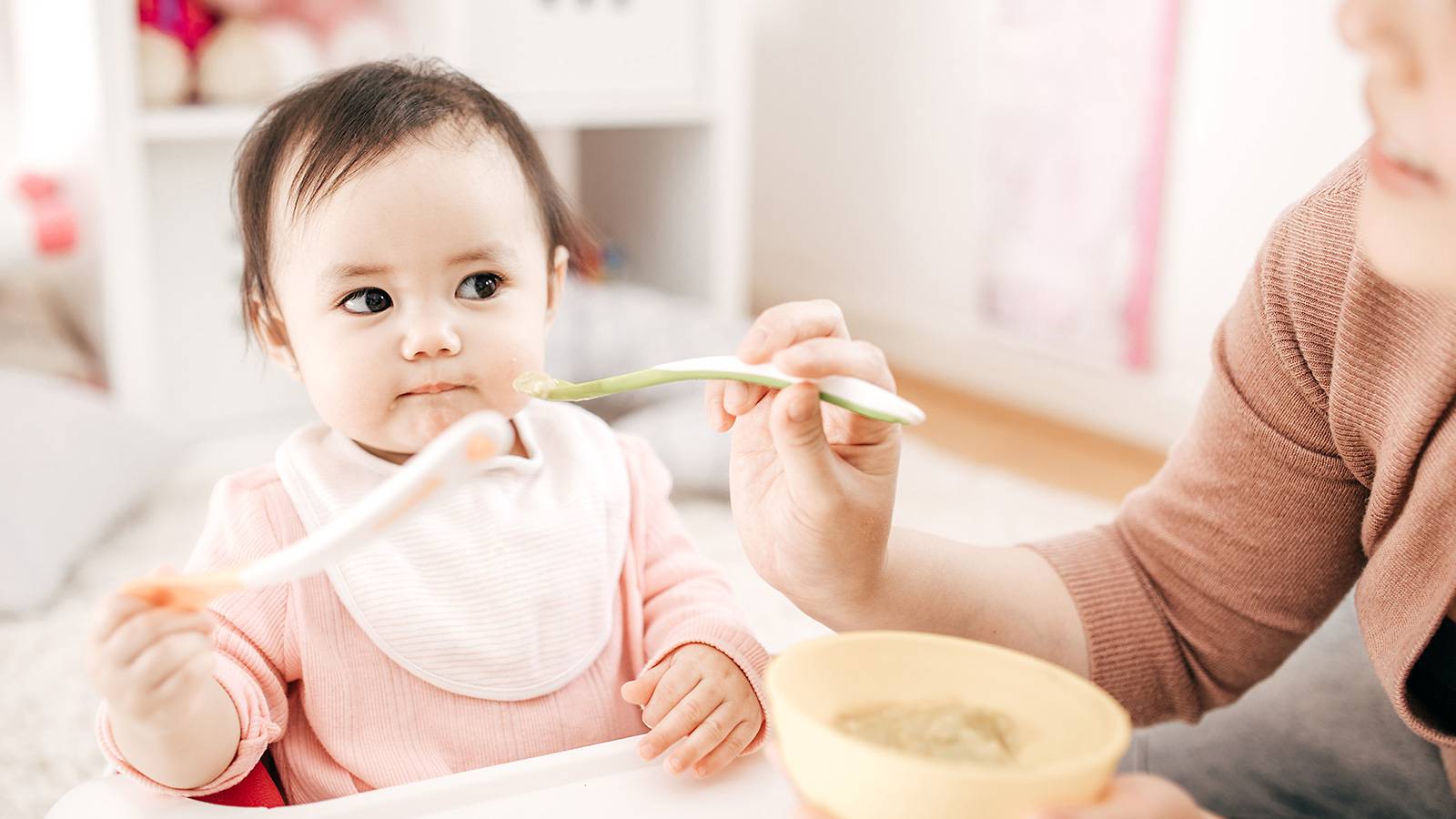
Now that bub is around 6 months old, it’s time to introduce him to the exciting and wonderful world of food! From this point, junior will start growing rapidly and milk alone will not meet his nutritional requirements.
Complement your baby’s milk feeds with table food. However, keep in mind that bubba’s digestive system is not as mature as yours ― nor is his palate ― so, don’t serve him steak and expect him to devour it. Plus, food is something new and if there’s one thing babies dislike, it’s the unknown!
Slow and steady wins the race when it comes to weaning your wee one onto solids. In the beginning, it’s all about experimenting with different types of flavours and textures. Keep in mind that milk should still be the main event in your child’s nutritional journey. At this point, mealtimes are more about getting you munchkin used to the act of chewing, swallowing and exploring new tastes and textures, so he grows up to be an adventurous eater.
Our advice? Start with very small portions and don’t be discouraged if junior turns spurns what you dish up. Weaning may well be a bumpy ride, so refer to this handy feeding cheat sheet to get started. We also answer frequently-asked questions below!
Infographic: Rachel Lim with iStock illustrations

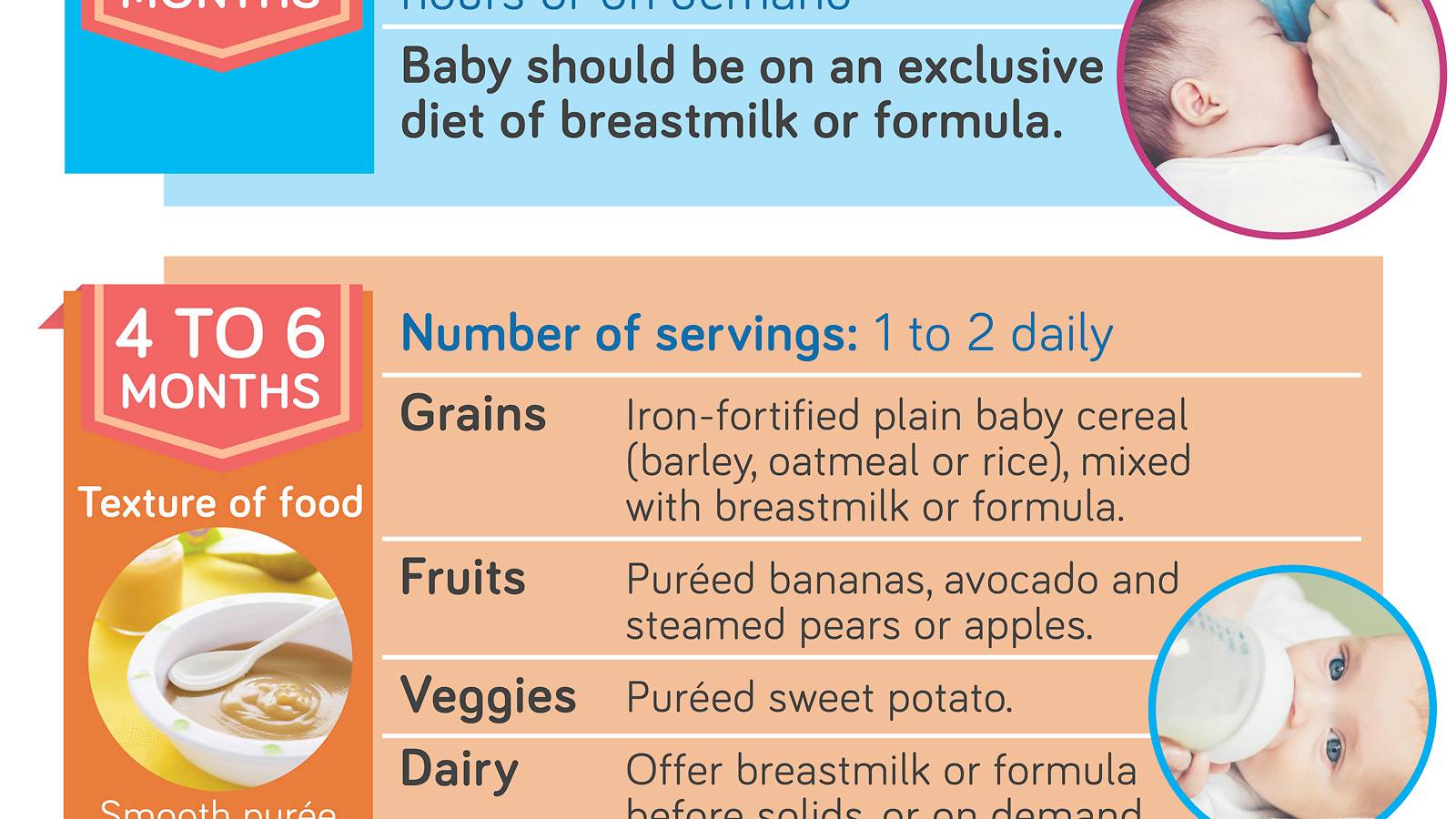
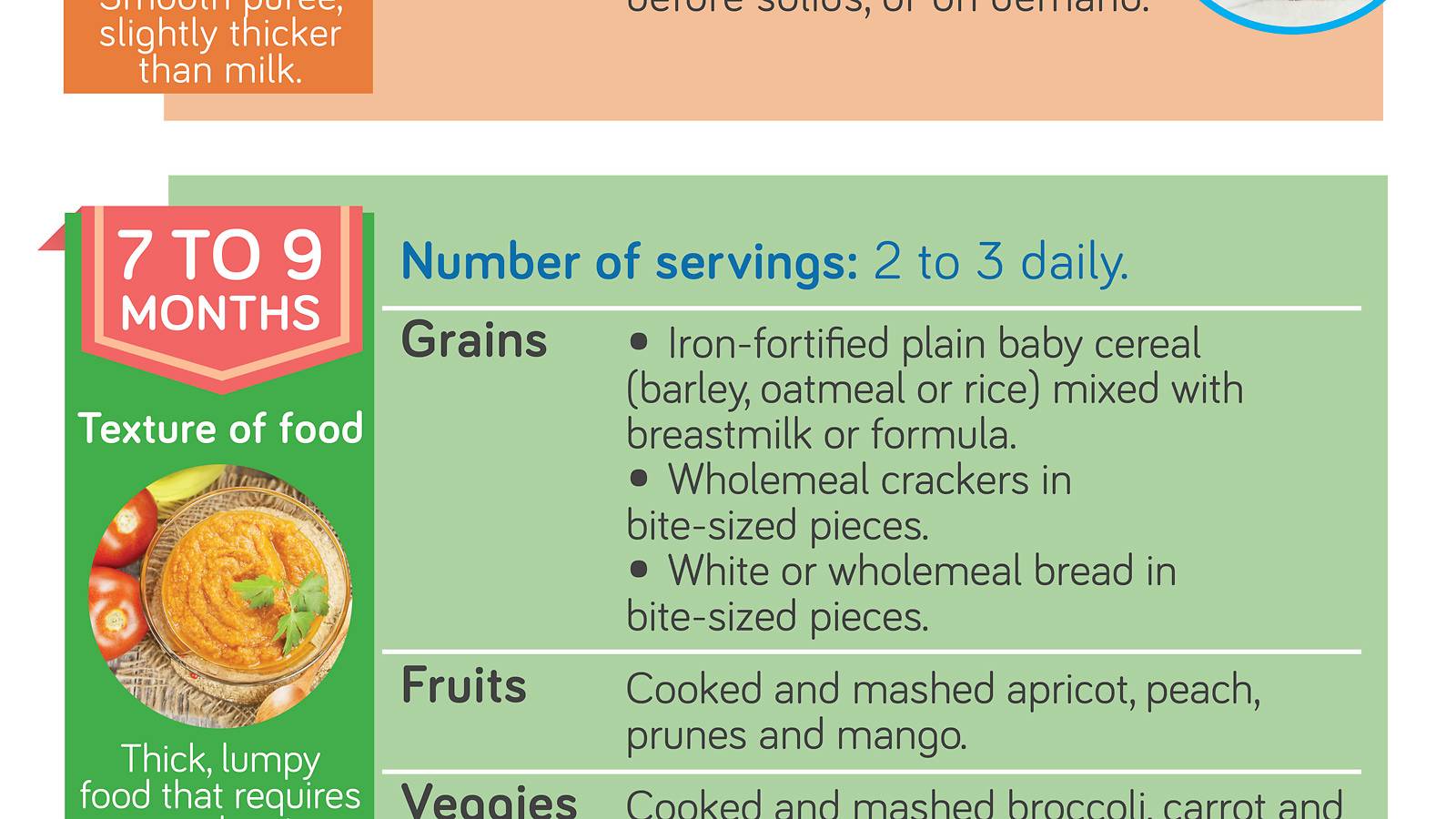
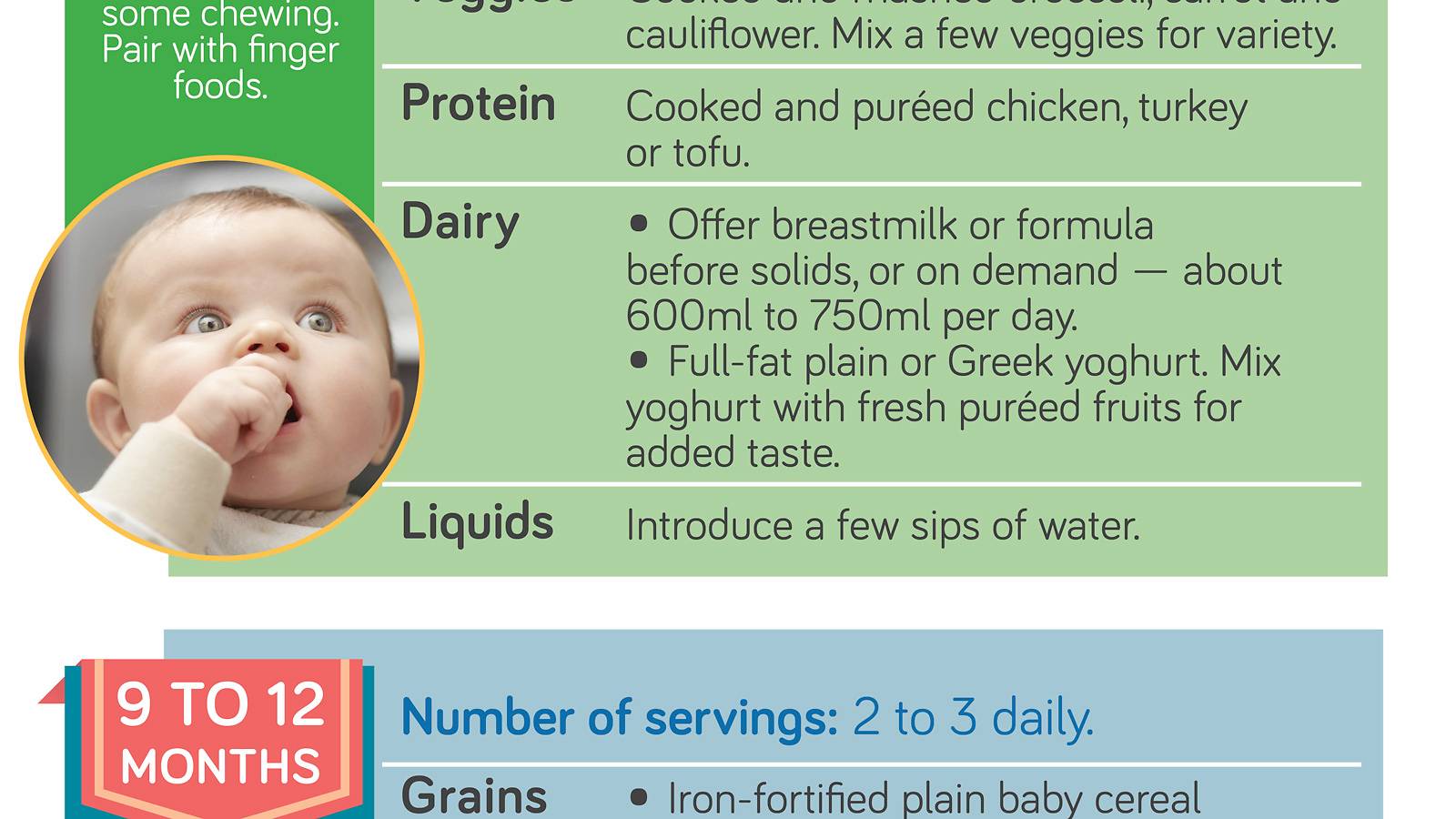
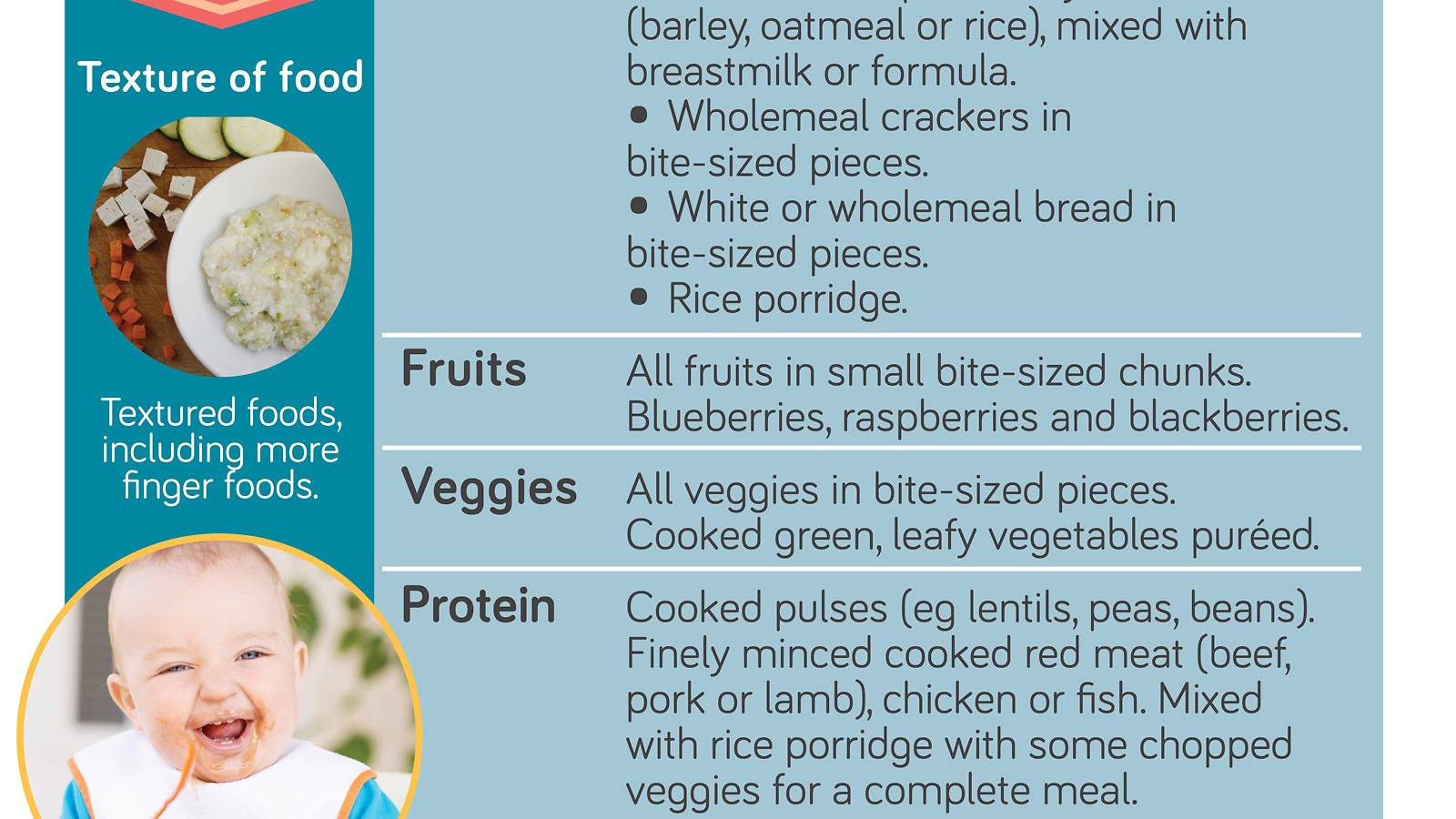
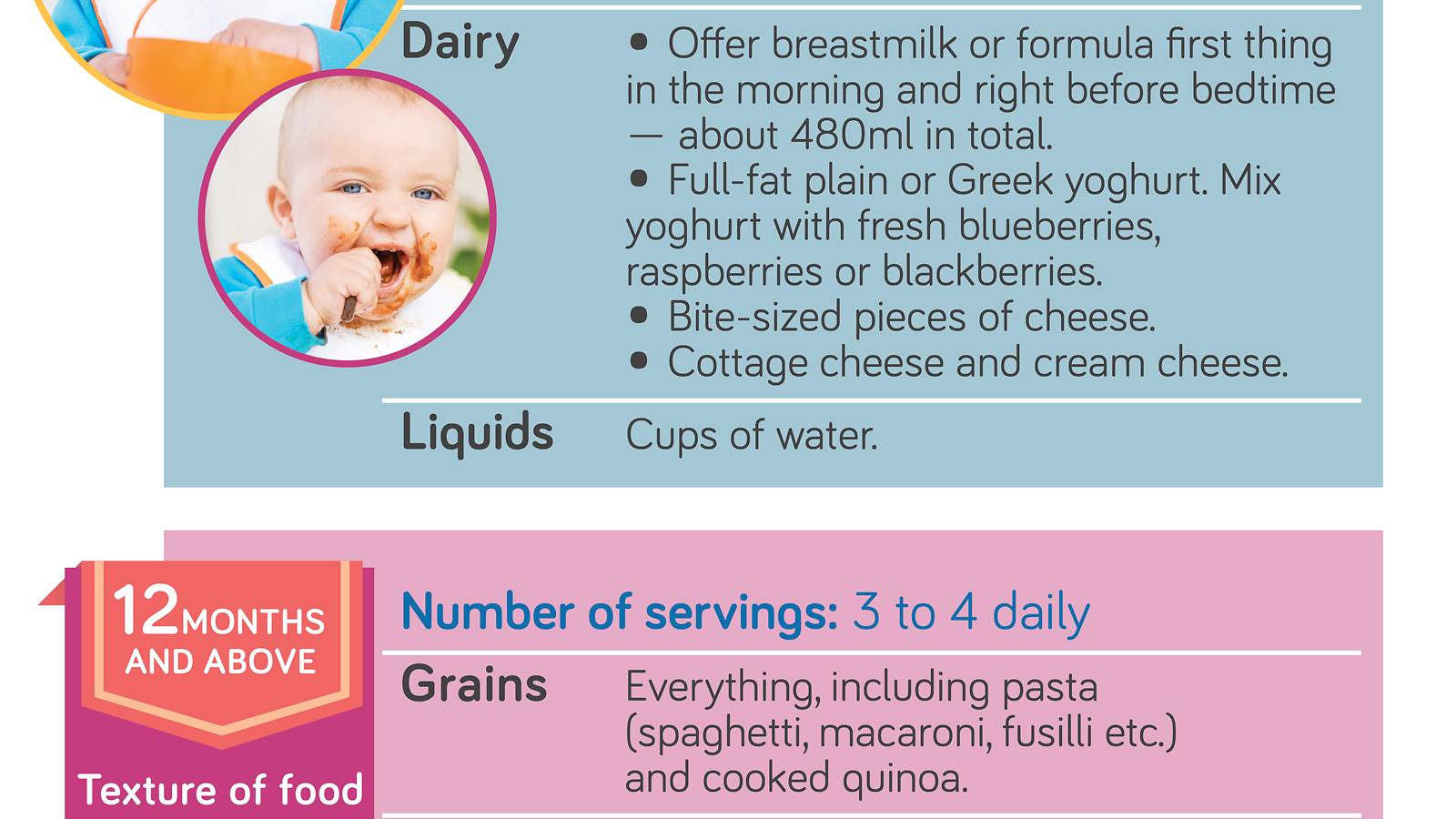
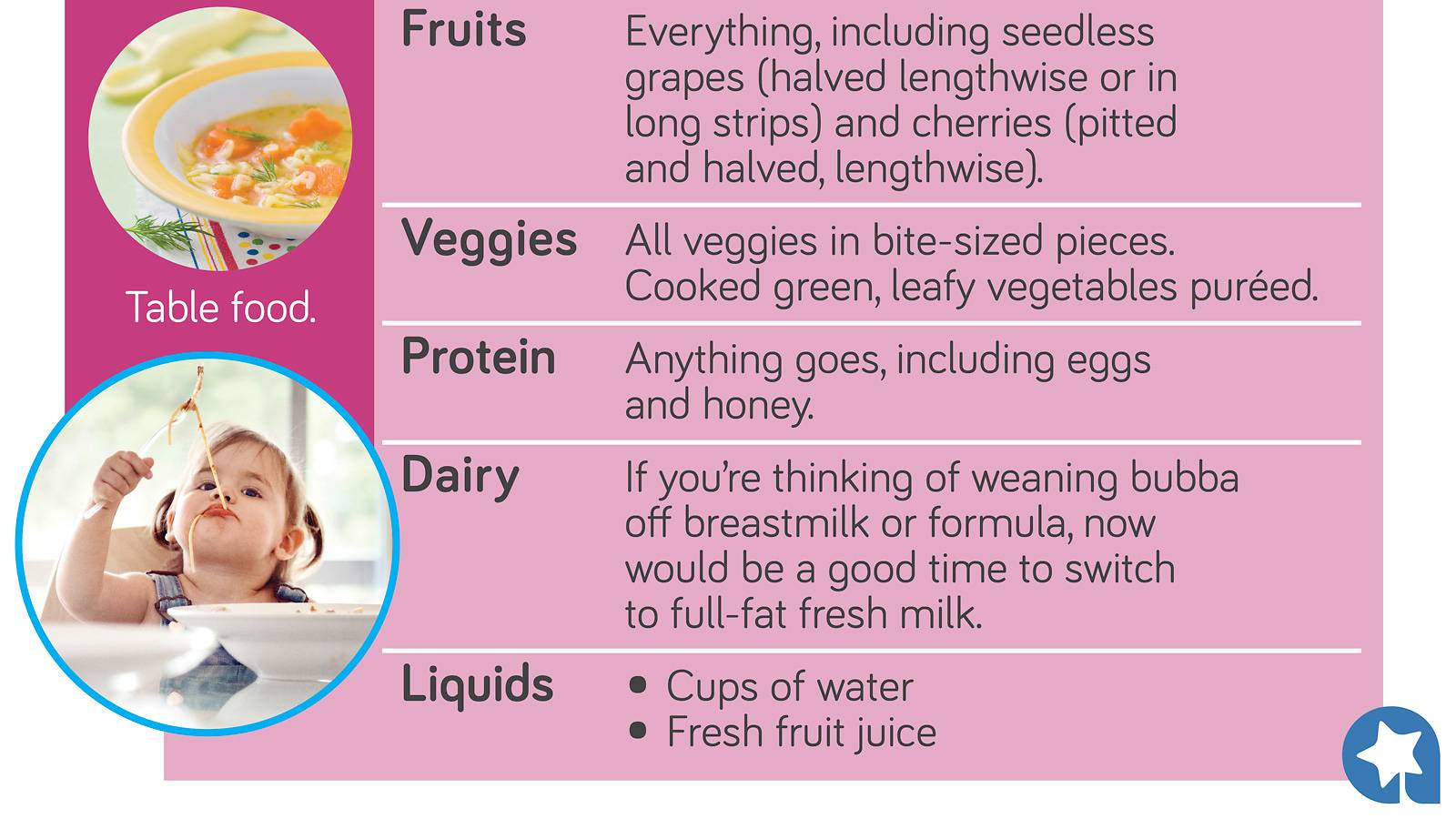
Q. When is the earliest I can start my baby on solids?
A. Babies who have been growing poorly or diagnosed with anaemia — an iron deficiency ― can be weaned earlier, but get your doctor’s advice. If your little one doesn’t have any health complications, introduce solids no earlier than 4 months of age. By this time, junior’s renal and gastrointestinal functions are generally mature enough to metabolise nutrients from food. Do bear in mind, however, that weaning should not be delayed beyond 6 months of age, as it can increase the risk of feeding difficulties later on. Plus, your baby may not be able to get adequate nutrition from milk alone.
Q. What is the best first food for my baby?
A. Start with an iron-fortified cereal (rice or oats) as it meets your baby's urgent need for iron at this stage. If junior doesn’t get enough iron in the first two years of his life, it could lead to anaemia, which can hinder his growth and overall health. Mix the rice cereal with breastmilk or formula, so baby is tasting and smelling something familiar. You can graduate to soft mashed fruit and cooked strained vegetables soon after, but remember to introduce one new food at a time. Wait three to four days between new foods to observe if there any allergic reactions.
Q. How much should I feed baby?
A. Start with a teaspoon of solid food daily, then increase the portion gradually to build up to a small meal that will replace a milk feed. Use the feeding guide above to plan a menu that includes items from the various food groups to ensure that you’re meeting junior’s nutrient needs. Remember, milk should still remain a staple part of his diet. If you’re worried your tyke might not be getting each nutrition, monitor his height and weight and compare it with infant growth charts.
Q. When is the best time to feed baby?
A. Make eating an enjoyable experience for both you and your little one. Pick the time of the day when he is alert and not too hungry, this will usually be a mid-morning feed. Put him on a high chair at the dining table to minimise distractions. This will also get him accustomed to dining etiquette. As he progresses, give food at regular mealtimes and snack times, so that he has regular meal pa. Don’t rush bub to finish his meal quickly, and don’t force if he’s not hungry or interested. If you can’t get junior to cooperate, eat together with him as it will pique his curiosity and encourage him to try new food.
Q. How can I incorporate baby-led weaning?
A. Baby-led weaning (or BLW), is a new feeding trend where you bypass purées altogether and head straight for finger food. Some parents and experts gave the thumbs up as it young one’s learn how to chew and swallow faster, plus it encourages independent eating. If you’re on the fence about BLW, but don’t mind giving it a go, start by giving bub “stick-shaped” pieces of fruits and vegetables, crusts and toasts, large pasta shapes, and long strips of meat. Complement the finger food with the puréed version. So, for example, if you’re giving junior pieces of steamed broccoli, also offer broccoli purée or chopped broccoli in rice porridge. By doing so, you’re ensuring your little one is getting enough nutrition, while they continue learning how eat independently. Having something in their hands will also distract bub, making it easier for you feed them. Read this article for more information on BLW.
Answers compiled from information available at KK Women’s and Children’s Hospital and Health Hub.
Main photo: iStock
Like us on Facebook and check SmartParents regularly for the latest reads!
In case you missed these stories…
Celeb mum Kelly Latimer: Being a mother is super tough
MUM SAYS If I could turn back time, I wouldn’t have had kids
